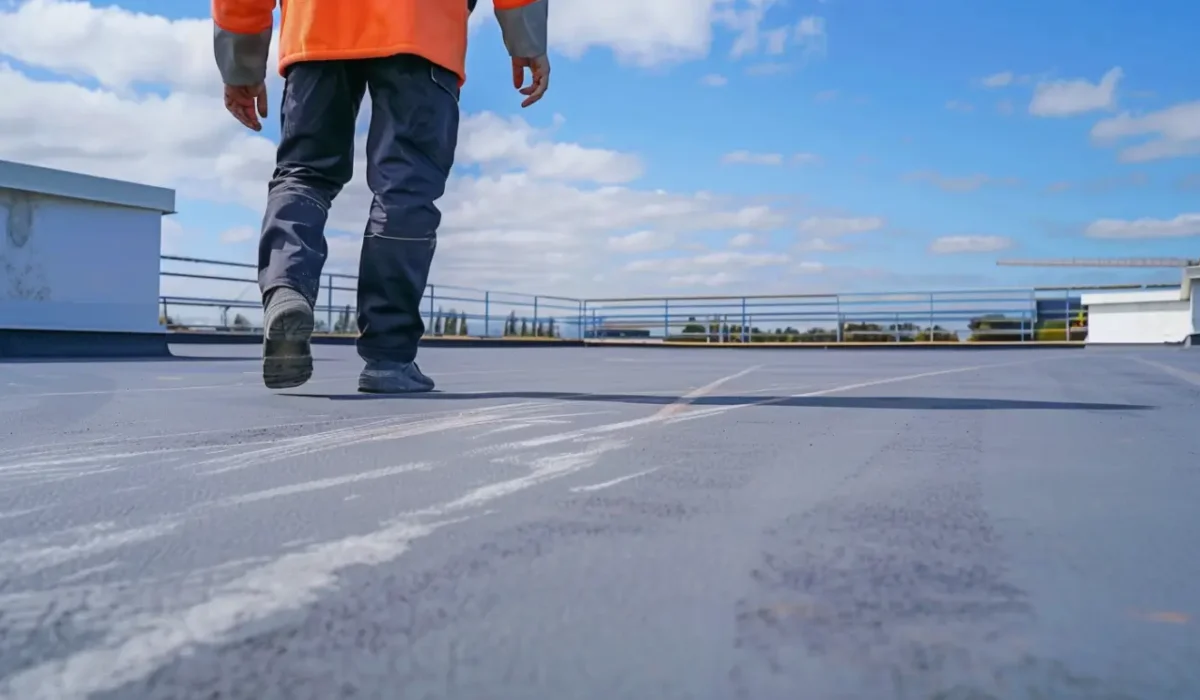Your commercial roof is one of your building’s most critical components—yet it’s often overlooked until problems appear. Regular roof inspections are the first line of defense in preventing leaks, preserving warranties, and extending the life of your roofing system. In Grapevine, TX, KangaRoof delivers comprehensive inspections that uncover vulnerabilities before they become costly failures, helping property owners stay proactive, protected, and compliant.
Why Roof Inspections Are Essential
Even the most durable roofing system isn’t immune to time, weather, or wear. Routine inspections:
- Identify small issues before they turn into major repairs
- Maintain eligibility for manufacturer warranties
- Document roof conditions for insurance and asset planning
- Ensure energy efficiency and proper drainage
In a climate like Texas—where hail, wind, and sun exposure are constant threats—staying ahead of damage is critical.
What Happens During a Roof Inspection?
At KangaRoof, our inspections go beyond the surface. Each visit includes:
1. Visual Surface Assessment
We examine the membrane or shingles for:
- Cracks, blisters, punctures
- Standing water or staining
- Membrane shrinkage or seam separation
2. Flashing and Penetration Check
Areas around skylights, HVAC units, vents, and walls are common failure points. We ensure flashing is secure and seals are intact.
3. Drainage System Review
Clogged drains, downspouts, and gutters typically lead to ponding water and structural damage. We clear debris and check for flow issues.
4. Interior Assessment (if needed)
We inspect ceilings and attic spaces for signs of leaks, mold, or water damage that may be linked to roofing failures.
5. Moisture and Infrared Scanning
For flat roofs, we use thermal imaging or moisture meters to detect hidden water intrusion under the surface.
6. Report and Recommendations
Every inspection concludes with a detailed written report including:
- Photos of key areas
- Damage summaries
- Immediate repair recommendations
- Lifecycle projections and budget forecasts
This documentation is valuable for insurance claims, lease agreements, and maintenance planning.
When Should You Schedule Roof Inspections?
We recommend two inspections per year—once in the spring and once in the fall. Additional inspections should be scheduled:
- After major storms or hail events
- Before buying or selling a property
- At the end of warranty periods
- Before installing solar panels or rooftop units
In Texas, post-storm inspections are especially important to catch hail damage early before it voids warranties or affects interior systems.
The Value of Working with Certified Experts
As an OC Preferred and Emerald Premium Contractor, KangaRoof offers more than just visual checks. Our certified inspectors are trained in all commercial roofing systems—from single-ply and modified bitumen to BUR and metal roofing—ensuring we understand how each material should perform over time.
We also keep detailed records of your roof’s history, making future inspections and budgeting even more precise.
What Happens If You Skip Inspections?
Neglecting inspections can result in:
- Missed early signs of leaks or structural issues
- Unexpected repair costs
- Denied insurance or warranty claims
- Shortened roof lifespan
- Interior damage that affects tenant operations or equipment
For commercial property owners, the risk isn’t worth the gamble.
Final Thoughts
Roof inspections are one of the most cost-effective ways to protect your investment, avoid emergencies, and keep your building running efficiently. In Grapevine, TX, KangaRoof provides trusted, thorough inspections that give you peace of mind and clear action plans—backed by certified expertise and decades of experience.
Read also our blog: How Your Roof Can Help Retain Heat During Winter
